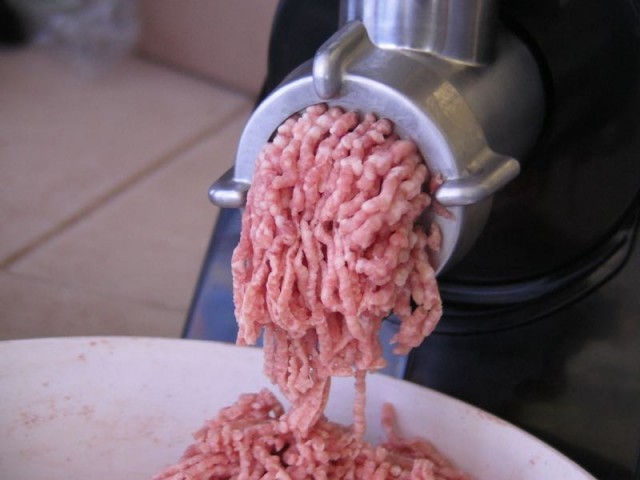
Rabbits are the corner stone of our food web. From the weeds, alfalfa, and other rabbit friendly plants that we grow in and around our forest garden, we are able to produce all the meat we can eat (and quite a bit for our neighbors too). We then use the waste products from this input node as connections to our poultry, mealworms, earthworms, and plants.
This week, Abe had to butcher two large litters, as we’d fallen a little behind. He’s made himself a butcher station (including a couple of very useful, easy to make tools that you can see in Step 1 and 2 of this how-to), and he can process a lot of rabbits very quickly.
Once the carcasses are prepped and cleaned, they come to me (as do the furs, but we deal with that in the tanning how-to). I bag up some of them whole and put them straight into the freezer. I then cut up the rest and either leave them as strips or grind them into sausage meat. When I do this, I usually remove the front legs and bag them separately to be used like chicken wings; this saves time, as it’s harder to get the meat off the front legs.
Because we eat rabbit meat almost every day, I have a ton of different ways of cooking it, just to avoid boredom. If people are interested, I could do a post on recipes one day, but for now I’ll just give you a brief rundown of some of the possibilities.
With the whole carcass (or split into large pieces), I’ll do roast rabbit, Italian braised, baked, fried, stewed or BBQ. The front legs can be used in any chicken wing recipe. With the strips that I cut and freeze on butcher day, I’ll make curry, mole, stir-fry, burritos, quesadillas, salads, and then dishes in a cream, tomato or nut sauce. With the ground meat, I make meatball soup, hamburgers, spaghetti Bolognese, sausage, and then things like stuffed squash. The list is really endless, as is our supply of fresh, tasty meat.
Categories
Submit a Comment